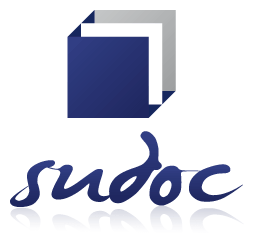Enhancing precision in chemical experiments
DOI:
https://doi.org/10.63053/ijset.9Keywords:
chemistry, enhancing, implications, pharmaceuticalAbstract
In this article, the integration of chemistry and information technology is explored to enhance precision in chemical experiments. This fusion involves leveraging electronic data and employing intelligent analysis to improve the accuracy of experiment results and reduce errors. The paper delves into methods and tools that utilize the combination of chemical data with information technology to enhance experiment performance. The innovative synergy between chemistry and information technology contributes to improved efficiency and precision in the field of chemistry. This intelligent approach to managing chemical experiment data utilizes algorithms and machine learning models for more accurate chemical data analysis. Furthermore, it enhances predictive capabilities for experiment outcomes and provides optimal solutions for conducting new experiments. This integration not only aids in the improvement of chemical experiment performance but also plays a significant role in various industries, including pharmaceuticals and biochemistry. The innovative combination empowers scientists to swiftly and more accurately address complex challenges in the field of chemistry.
This amalgamation serves as an intelligent strategy for data management in chemical experiments. By incorporating machine learning algorithms, the analysis of chemical data becomes more precise. The integration not only focuses on retrospective analysis but also enhances the ability to predict future experiment outcomes. This predictive capability opens avenues for optimizing experimental procedures and resource utilization. The article emphasizes the transformative impact of this interdisciplinary collaboration, not only in traditional laboratory settings but also in diverse industries where chemical processes play a crucial role. Moreover, the intelligent synergy between chemistry and information technology proves instrumental in accelerating research and development processes, particularly in pharmaceuticals and biotechnology. The article concludes by highlighting the profound implications of this innovative approach, offering scientists a powerful tool to navigate and overcome the complexities of modern chemistry with increased speed and accuracy.
References
Harris, D. C. (2010). Quantitative Chemical Analysis. W. H. Freeman and Company. 2. Skoog, D. A., West, D. M., Holler, F. J., & Crouch, S. R. (2013). Fundamentals of Analytical Chemistry. Cengage Learning.
Miller, J. N., & Miller, J. C. (2010). Statistics and Chemometrics for Analytical Chemistry. Pearson.
Dean, J. A. (1992). Lange's Handbook of Chemistry (15th ed.). McGraw-Hill
Harris, D. C. (2010). Quantitative Chemical Analysis. W. H. Freeman and Company. 6. Skoog, D. A., West, D. M., Holler, F. J., & Crouch, S. R. (2013). Fundamentals of Analytical Chemistry. Cengage Learning.
Miller, J. N., & Miller, J. C. (2010). Statistics and Chemometrics for Analytical Chemistry. Pearson.
Dean, J. A. (1992). Lange's Handbook of Chemistry (15th ed.). McGraw-Hill.
Sawyer, D. T., Sobkowiak, A., & Roberts, J. L. (1995). Experimental Electrochemistry for Chemists. Wiley.
Atkins, P., & de Paula, J. (2009). Atkins' Physical Chemistry. Oxford University Press.
Daniel C. Harris. (2015). Exploring Chemical Analysis. W. H. Freeman and Company.
Douglas A. Skoog, F. James Holler, & Timothy A. Nieman. (1997)
Downloads
Published
How to Cite
Issue
Section
License
Copyright (c) 2023 International journal of Modern Achievement in Science, Engineering and Technology

This work is licensed under a Creative Commons Attribution 4.0 International License.












